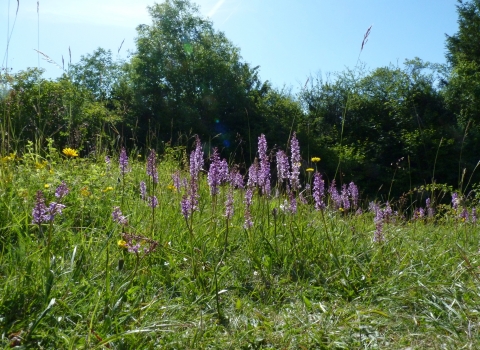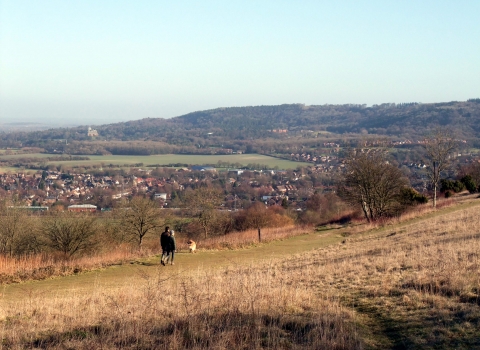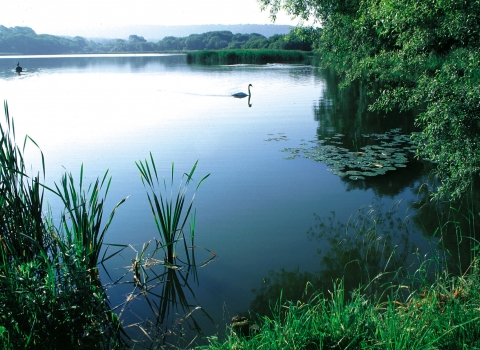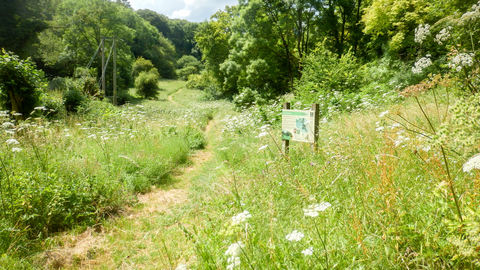
Crong Meadow at BBOWT's Dancersend nature reserve near Aylesbury. Picture: Mick Jones
Dancersend with Pavis Woods
Location
Know before you go
Dogs
When to visit
Opening times
Open at all timesBest time to visit
All year roundAbout the reserve
Woodland haven
Variety is the spice of life in this wonderfully mixed reserve which nestles within two sheltered valleys deep in the Chilterns. Dancersend, once owned by the Rothschild family, was made a nature reserve in the 1940s in remembrance of Charles Rothschild, the founder of UK nature conservation.
Different types of woodland habitats reflect a chequered history. Most of the original woodlands were felled during the Second World War, but in the 1950s, two large woods were replanted with mixed woodland including beech, ash, cherry and oak.
Now maturing, these woods have stunning displays of spring flowers. You can also find a number of old woodland plants including the white hanging bells of Solomon's-seal and the unusual winter-flowering stinking hellebore.
Discover the history of Dancersend
The sounds of birds
The woodlands are home to many birds. Listen out for the drumming of the great spotted woodpecker and the 'yaffle' of the green woodpecker. Tawny owls can be heard hooting in the trees and the 'pitchou' call of the marsh tit is commonly heard.
Chalk specialities
Between the woods a series of grassy clearings were rescued from scrub in the 1970s and have become a haven for butterflies and other insects. Today, delicate fly orchids and spectacular greater butterfly orchids flower here. In the largest area of chalk grassland, careful management over the years has enabled orchids to grow alongside the delicate Chiltern gentian and rare meadow clary. As part of a WREN-funded chalk-grassland project we have re-seeded 6.5 hectares of land to the west of the reserve, using a bespoke seed mix based on flowers already found on the reserve.
We have also created several large scrapes to provide bare chalk for early colonising species such as Chiltern gentian, kidney vetch and horseshoe vetch to flourish. In turn, these flowers will eventually provide habitat for butterflies including the rare chalkhill blue and small blue.
Seasonal wildlife
In spring, there are carpets of bluebells in the woodlands. At the clearings and woodland edges, primroses and cowslips flourish. You can also find wood vetch here, the only place in Buckinghamshire where it grows. In spring and summer, these sheltered sites encourage a range of butterflies such as dingy and grizzled skippers, chalkhill blue, silver-washed fritillary, marbled white and meadow brown.
Autumn brings a large number of fungi, including the amazing collared earthstar whose outer layer splits and folds backward into a star-shaped pattern. Another interesting species to spot is the scarlet elfcup which you can find on rotten moss-covered twigs in winter and early spring.
Pavis, Northhill and Black Woods
In 2015 the Trust took on the long-term management of Pavis, Northhill and Black Woods, collectively known as Pavis Woods. It is 35 hectares of mature beech woodland, scrub and more recently planted woodland, lying on the steep scarp facing Dancersend. Within this part of the reserve look out for the old boundary trees with extensive root networks and patches of wych elm and hornbeam, in spring, enjoy the birdsong as chiffchaffs return to nest. Rich in archaeology, in Pavis Woods you can find sunken tracks leading up from the valley onto the higher ground at the top of the site. There are many marl pits, and saw pits showing that humans were constantly working this landscape in the past and the bank and ditch boundaries of three parishes can be traced through the woods. The Ridgeway National Trail passes through this part of the reserve.
Ash dieback at Pavis Woods
Diseased ash trees can become very unstable. The Berks, Bucks and Oxon Wildlife Trust is employing specialist contractors to fell diseased trees where they pose a risk to public safety. Permission has been granted by Buckinghamshire Council to temporarily close some footpaths through the reserve. We apologise for the inconvenience and will do our best to keep disruption to a minimum.
The work is being timed to minimise the impact on wildlife. Trees have been surveyed and where possible important bird and bat habitat will be retained.
To find out more, read our ash dieback FAQ.
Reserve champions - supporting their favourite reserve:
An excellent very well managed reserve by Mick Jones and his team.
Liz Firth
Things to do
- Download and follow the Dancersend Tree Trail to discover fun activities and interesting tree facts.
- Try our circular Wildlife Walk (1/2 mile). Just follow the badger waymarkers.
- Explore the reserve and surrounding area with our Tring Park Wild Walk. Starting in Tring this 10km circular walk takes in Dancersend nature reserve and the Ridgeway National Trail. OS Explorer Map 181, 1:25,000 scale, covers the route of this walk.
- Look out for our seasonal guided walks.
- We run regular work parties on the reserve.
Species
- Adder's-tongue fern
- Cuckooflower
- Wood sorrel
- Cowslip
- Bluebell
- Chiltern gentian
- Bird's-nest orchid
- Greater butterfly-orchid
- Bee orchid
- Pyramidal orchid
- Scarlet elfcup
- Chalkhill blue
- Dingy skipper
- Grizzled skipper
- Green hairstreak
- Silver-washed fritillary
- Six-spot burnet moth
- Glow-worm
- Chiffchaff
- Green woodpecker
- Nuthatch
- Tawny owl
- European badger
- Red fox
Contact us
Environmental designation
Take a virtual tour of Dancersend nature reserve with volunteer warden Mick Jones
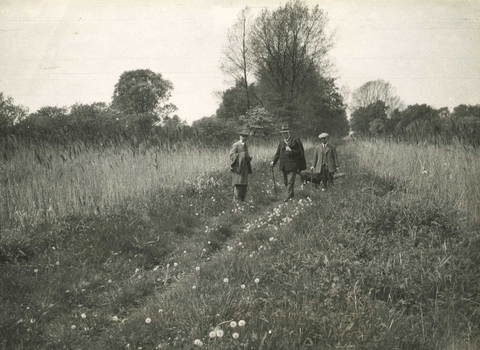
Naturalists at Woodwalton Fen, Huntingdonshire, in 1935. Woodwalton Fen was bought by Charles Rothschild in 1910 and gifted to the SPNR in 1919. Picture: The Wildlife Trusts







